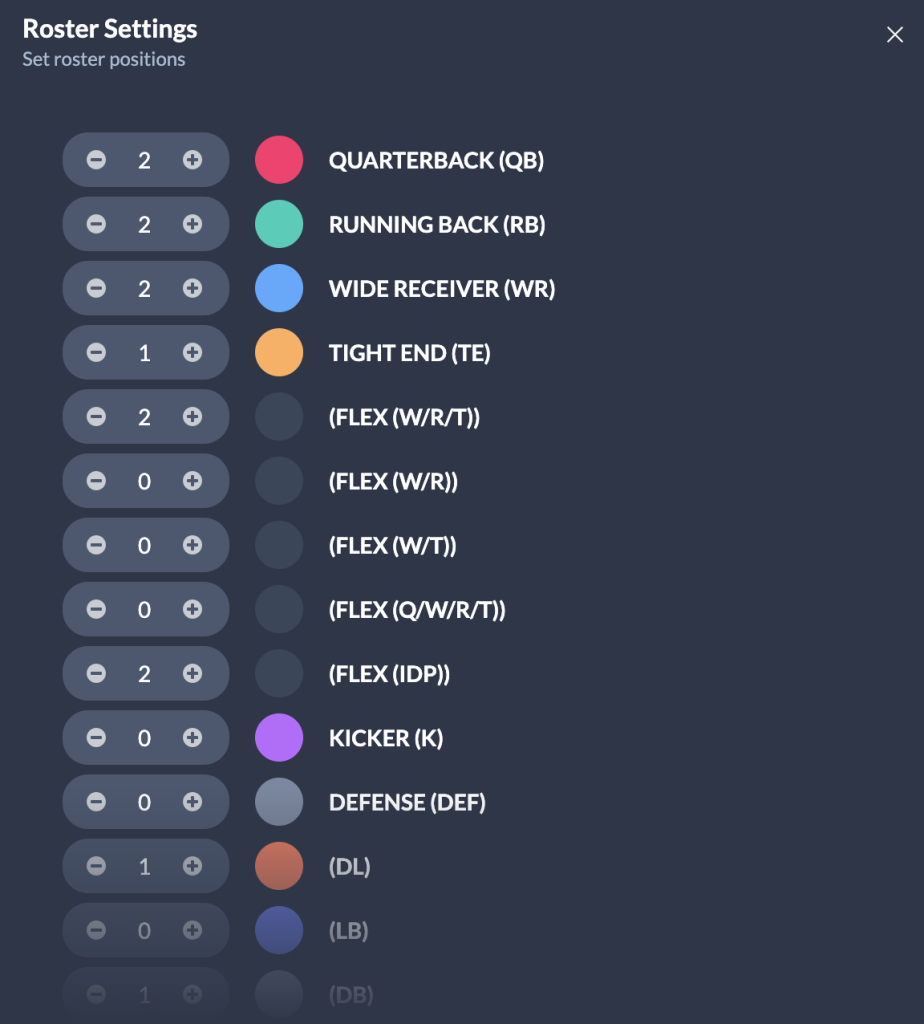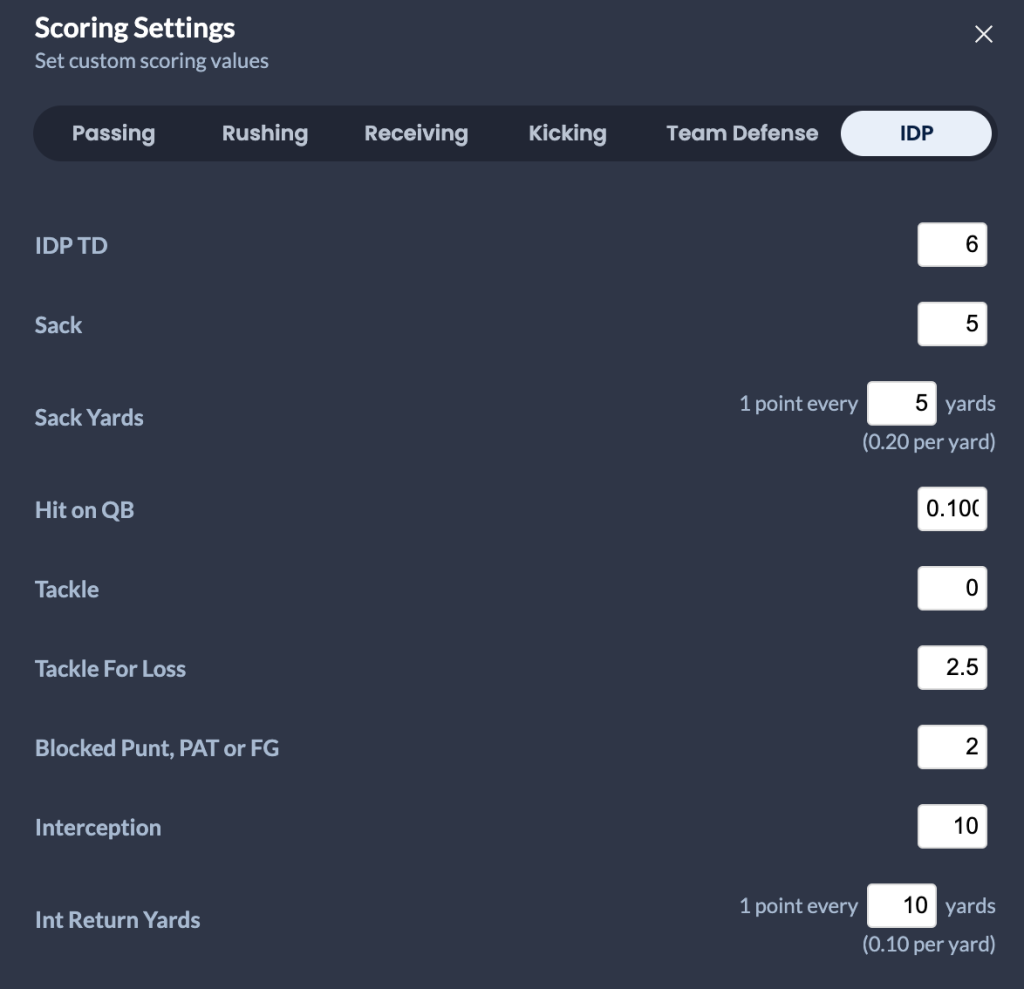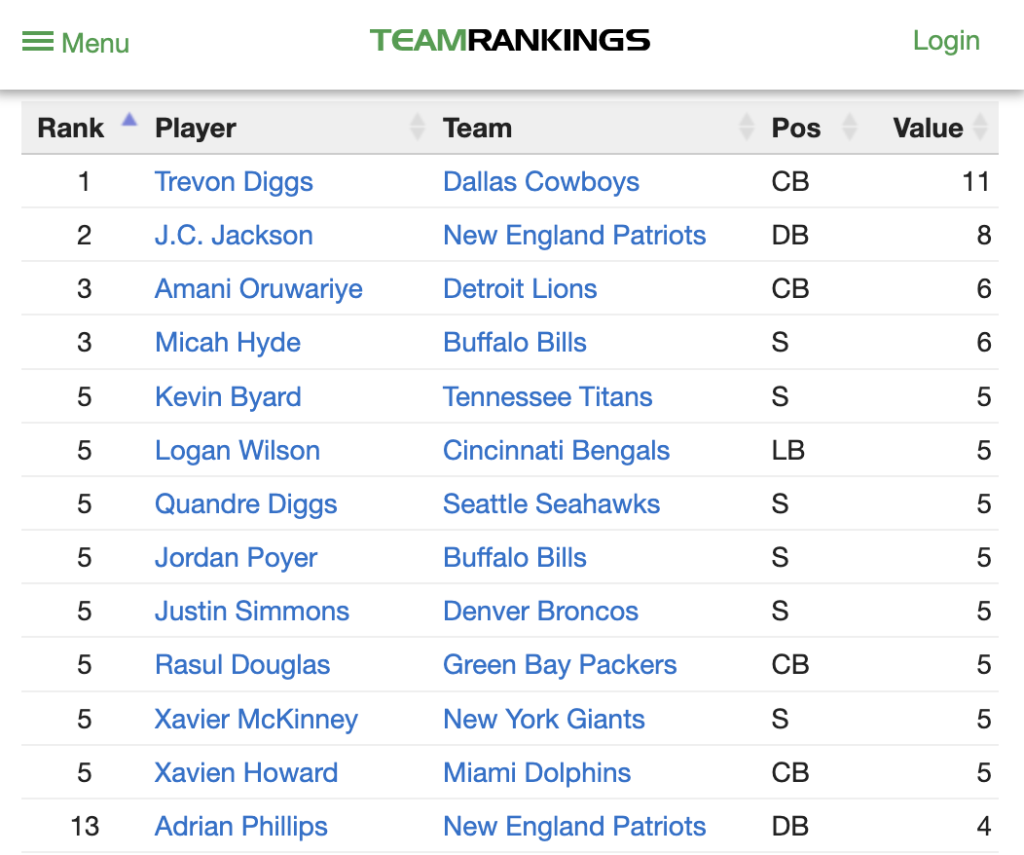Last season, I was the commissioner of a fantasy football league with my brothers and friends. I wanted to make it more fun and interesting, so I added IDP and rewarded big plays. I learned some lessons on how to build an IDP league, which will help you both as a commissioner setting up a league and as a player competing in one.
Using individual defensive players instead of defensive teams indeed improves the fantasy football experience. DSTs are an anomaly in a game that highlights individual players and rewards individual achievements. Fantasy football is about taking the reins as GM and rooting for your boys. You can’t root for an entire 11-man defensive unit in the same way.
From a practical standpoint, IDP leagues give you a few extra positions to fill. That means a few more choices to make every week and a few extra variables to influence the outcomes of games. That all makes fantasy football more exciting.
Once I have convinced you of the superiority of IDP leagues, it is time to think about how you should structure your league in terms of scoring and positions. This isn’t a simple question. You will not be just checking a box of a few default options, like when choosing between full PPR, 0.5 PPR, or standard. There is no IDP standard. You build your league almost however you want.
How Many Positions?
Most beginners opt for between one to four IDP starters. This is what I chose: 1 DL, 1 DB, and two flex positions. On some platforms, you can go so far as to differentiate the DL positions between DE and DT and the DBs between CB and S (but not on Sleeper). Also, note that outside LBs in 3-4 defenses (i.e., edge rushers) like T.J. Watt, Joey Bosa, and Micah Parsons are classified as DE in addition to LB on platforms like Sleeper. You can go so far as to recreate an NFL defense with 8-11 starters.

If you are starting a new league, you should limit the size of your IDP roster. You don’t want your fellow team managers to be too overwhelmed. After all, most people don’t pay attention to defense with the same focus they do to offense. It is harder to follow which players are making plays than seeing a WR make a body-contorting catch on the sidelines and know he did something extraordinary.
In addition, competitors must learn a whole new scoring system and draft and waiver strategy.
IDP123 Scoring System
The scoring system, of course, is not standardized, either. The number of points scored for a tackle and sack can vary greatly. Recently, the IDP123 scoring model has been adopted more and more. Dynasty Nerds adopted it as our standard in 2020, and Sleeper has been talking about adopting it.
IDP123 rewards points in increments of one (for QB hits and assisted tackles), two (for solo tackles and TFLs), three (for forced fumbles, fumble recoveries, pass breakups), and six (for sacks and interceptions). It is a good system, assuring that the top defensive players score approximately equally with the top offensive players.
The Case for a Big Play-Heavy Scoring System

In my league’s inaugural season, however, I opted for rewarding big, big points for big plays. I put sacks and interceptions at 20 points each and solo tackles at one point each. The result was that T.J. Watt led the league in scoring with about 500 points (compared to 439.5 for Cooper Cupp in full PPR).
Watt had a freak season, but the three DLs with 15 or more sacks scored over 300 points on sacks alone. It was a feast or famine situation. Just one big play made a game—which made it exciting to watch games but too unbalanced. So I am tweaking the scoring this season, but I still advise making big plays worth more than the standard.
I will argue that sacks and turnovers in IDP leagues should be highly valued for two reasons. They are extremely valuable in real-life football, and team managers should be incentivized not to ignore defensive players.
The Value of a Turnover
In 2019, an interception cost the offensive team 4.1 expected points on average, and a sack cost the offense 1.5 expected points, according to Football Perspective. An interception always stops the offense from scoring. Usually, it results in the team taking the ball away, achieving better field position than they would have if their opponents had punted the ball to end a drive. A sack significantly increases the difficulty of the offense converting a first down.
But still, if an INT isn’t worth six expected points, why should it be scored the same as a TD or more, you might ask? Well, a TD isn’t always worth six expected points either, depending on where it occurred and under what circumstances.
ESPN’s Alok Pattani explained in 2012:
A 60-yard pass play down to the 1-yard line on third-and-10 is worth 5.7 EPA because it puts you right on the doorstep of scoring. The subsequent 1-yard rushing TD on first-and-goal is worth much less, even though that’s the play that gets you the six points. Think about which play is more valuable to the offense (not in terms of fantasy football).
Fantasy football scoring is set to meet certain needs of gameplay. In terms of maintaining positional balance with scoring, DBs need to have a high value for INTs since they make fewer tackles than other defenders. INTs are also less common than sacks or TDs. In 2021, eight players had ten or more receiving TDs, eight had ten or more rushing TDs, and 19 had 20 or more passing TDs. Only one, Trevon Diggs, had more than ten INTs, and only two had more than five. Add to that that there were only two CBs with the top 50 for total tackles (and 13 safeties), and you see that DBs have few scoring opportunities.

In summary, I have concluded that INTs must be worth more than sacks because they are more valuable to a team than a sack is, more difficult to achieve throughout a game, and helpful in creating positional balance.
My modified big-play-friendly scoring system for 2022
Assisted tackles: 0.75 points
Solo tackles: 1.5 points
Passes defended: 3 points
Forced fumbles: 4 points
Sacks: 5 points, plus 0.2 points per sack yards
Fumble recoveries: 6 points, plus 0.1 points per return yards
Interceptions: 10 points, plus 0.1 points per return yards
Adding return yards and sack yards as variables increases the variability for defensive players, making the game more fun, and rewards big plays that set up their teams’ offenses in good field position.
Now with these rules in place, the top scorers in my league from 2021 would have been:
QB: Josh Allen – 381
RB: Jonathan Taylor – 337
WR: Cooper Kupp – 355
TE: Mark Andrews – 247
DL: T.J. Watt – 334
LB: 1.) Watt, 2.) Oluokun – 304
DB: Trevon Diggs – 270
(A few other wrinkles change the offensive scoring from default standards: 0.25 points per reception and 0.25 points per receiving first down, with the intent of basing it on half-point PPR, but rewarding quality catches most.)
It’s Your League!
It’s less simplified, but I feel if you are playing with friends, you should do your own thing. Take advantage of your league management platform with as many options as possible.
In this system, Watt is no longer so insanely outperforming the offensive players, and the scoring totals of the top 10 DLs roughly track the totals of the top 10 WRs.
I am making a case for rewarding big plays extremely disproportionately because I think it makes the games more fun to watch. But you can flip the numbers around however you want and check what different combinations do to your scoring leaderboard.
Whatever roster and scoring settings you choose, I hope this thought exercise helped you consider the pros and cons of different set-ups.
Make sure you subscribe to the #NerdHerd, where you get exclusive content, dynasty/rookie/devy rankings, buy/sell tool, and a bonus podcast too. Dynasty Nerds also recently launched the #DynastyGM tool, a complete game-changer in the fantasy industry. Click here for a free trial. We truly are your one-stop shop for all your fantasy football needs!


















